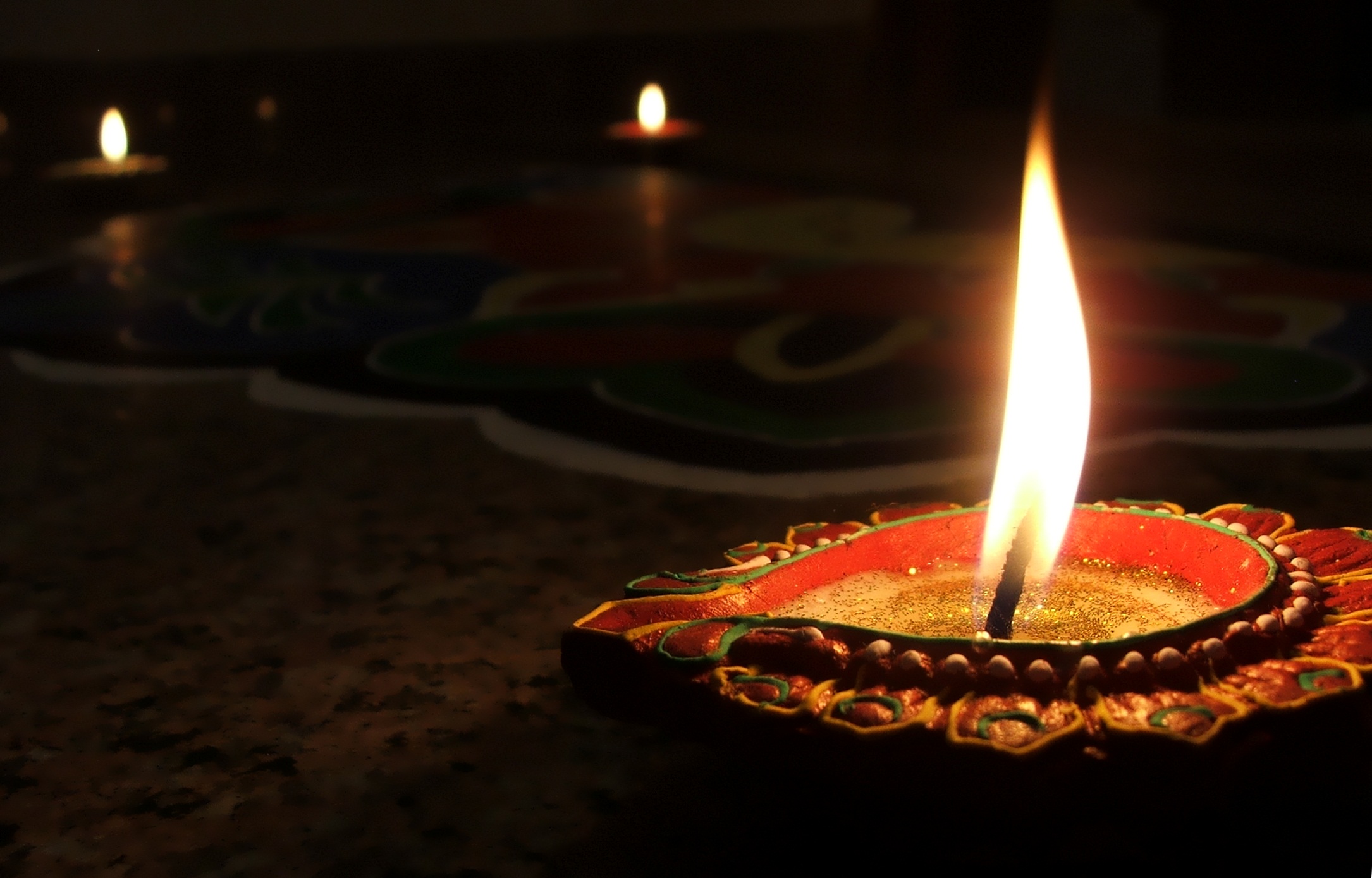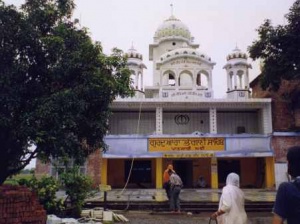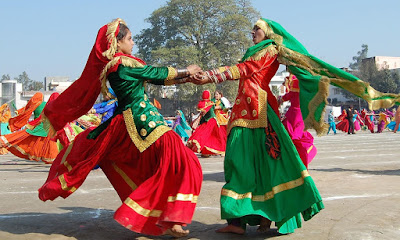Takht Sri Damdama Sahib
Damdama literally means a breathing place and it was in real a place for Guru Gobind Singh, who relaxed in Talwandi Sabo after fighting a battle. Talwandi Sabo is about 28kms from Bhatinda, Punjab. Damdama Sahib is also one of the Takhts of Sikhism and is a historically important place as well, as it is here where Guru Gobind Singh wrote Bir of Sri Guru Granth Sahib. Also, it is the same place where Guru ji tested the faith of Singhs.
Takht Sri Patna Sahib
Situated in Patna, Takht Sri Patna Sahib is one of the most important Sikh religious places in India. Patna is believed to be the birthplace of Guru Gobind Singh and the placewhere he also spent many years of his life. The Gurudwara was built in the remembrance of Guru Gobind Singh by Maharaja Ranjit Singh in 1780. Besides being the birthplace of Guru ji, Patna Sahib holds importance for Sikh pilgrims as Guru Teg Bahadur also visited Patna and stayed in the same place.
Gurudwara Bangla Sahib
Located in the heart of Delhi, Gurudwara Bangla Sahib is one of the imminent landmarks of the capital city. Built between the 17th and the 18th century (In the 17th century it was a bungalow and in the 18th century new construction was done, this Gurudwara was built to commemorate the stay of eighth Sikh Guru Har Krishan here. As mentioned earlier, this sacred edifice was once a bungalow that was owned by Maharaja Jai Singh. Legend has it that Guru Har Krishan stayed here in 1664, when Delhi was under the influence of chicken pox and cholera epidemic. Guru Har Krishan helped the people by giving them clean water from the nearby well. Unfortunately, Guru Har Krishan contracted the illness and died here. In order to pay homage to Guru Har Krishan, Maharaja Jai Singh built a tank over the well, which is believed to have healing property. Today, Gurudwara Bangla Sahib is one of the most visited Gurudwaras in Delhi.
Gurudwara Majnu ka Tila Sa
This Gurudwara, situated in North Delhi near ISBT Kashmiri Gate, is reckoned to be the oldest Sikh shrine in Delhi. It is believed that the shrine is named after a mound where Majnu (a boatman who used to ferry people across the Yamuna River for free) met Guru Nanak. In 1783, Sikh leader Baghel Singh built a Gurudwara commemorating the stay of Guru Nanak. Also, the sixth Sikh Guru, Guru Har Gobind Singh, stayed here for quite some time and this is also one of the reasons why this place holds so much importance amongst Sikh devotees.
Gurudwara Mattan Sahib
A highly revered place in Srinagar, Gurudwara Mattan Sahib is situated on Anantnag-Pahalgam Road. Built by a Brahmin who converted to Sikhism after listening to the influential message of Guru Nanak Dev, Gurudwara Mattan Sahib is a symbol of eternal knowledge and faith in the supreme. The Gurudwara is built on the site of ruined temples and is today one of the most popular sacred places in Kashmir, where apart from Sikh devotees Brahmins also pay homage.
Gurudwara Chhevin Patshahi Thara Sahib
Gurudwara Sehra Sahib is situated in Sultanpur Lodhi City in Punjab. The Gurudwara is named after the incident that took place here. Legend has it that Guru Har Gobind Singh while heading to Dalla for his marriage, stopped by Sultanpur Lodhi for a night. It is believed that Har Gobind Singh’s Sehra (Floral headband) ceremony took place here. Thus, the Gurudwara built here was named Gurudwara Sehra Sahib.
Gurudwara Takhat Sachkhand Shri Hazur Abchalnagar Sahib
Sahib Gurudwara is situated in Nanded. It is believed to be the same place where the 10th Sikh guru, Guru Gobind Singh, breathed his last. Maharaja Ranjit Singh constructed a Gurudwara at this place in 1832, which is highly revered in the Sikh community. The complex inside is called Sachkhand or the Realm of Truth and the room inside the Gurudwara, where it is believed that Guru Gobind Singh breathed his last breath, is called Angitha Sahib.
Gurudwara Sri Paonta Sahib
This Gurudwara is amongst the most famed Gurudwaras in India. It is situated in Sirmour district of Himachal Pradesh and has its popularity attributed to being a place where Guru Gobind Singh wrote the pious Dasam Granth. An important Sikh pilgrimage site, Paonta Sahib got its name from either the fact that Guru Gobind Singh set his foot here or because he lost an ornament here that he used to wear on his foot. Shri Talab Asthan and Shri Dastan Asthan are the vital places inside the Gurudwara; atShri Talab Asthan, salaries are disbursed and at Shri Dastan Asthan turban-tying competition are held. Also, next to the Gurudwara is an ancient temple that is dedicated to the Yamuna River.
Gurudwara Tirgarh Sahib
Gurudwara Tirgarh Sahib is situated at a distance of about 22kms from the famed Paonta Sahib Gurudwara in Himachal Pradesh. This Gurudwara is famed as a spot from where Guru Gobind Singh shot arrows at his enemies while he was fighting in a battle. This Gurudwara is the symbol of courage and is frequented by many devotees who come to pay homage at Paonta Sahib.
Gurudwara Mandi Sahib
Gurudwara Guru Gobind Singh Ji is situated in Mandi, Himachal Pradesh. This Gurudwara stands as a symbol of the assurance given by Guru ji to the Raja of Mandi. As per the story goes, Guru Gobind Singh was invited by Raja of Mandi and when the time for him to leave came, the King of Mandi humbly asked Guru ji who will protect Mandi from Aurangzeb; in response to this question, Guru ji aimed his gun at a pitcher floating in the river and fired, the pitcher instead of sinking kept floating. Seeing this, Guru Gobind assured the King of Mandi that like the pitcher floated even after being shot at, so will Mandi remain safe from any attack. A Gurudwara was later constructed here, where this incident took place and one can see some of the belongings of Guru ji here even today
Gurudwara Shri Narayan Hari
Popular as Manikaran Sahib, Gurudwara Shri Narayan Hari is situated in Manikaran, which is about 45kms from Kullu. The Gurudwara is the result of 50 years of consistent labour put by Baba Narayan Hari. According to some accounts, Baba Narayan came to Manikaran and started building a Gurudwara, where he constructed a small wooden structure. Several time this Gurudwara had to face local people’s anger, who demolished it each time he started to rebuild it. However, Sant Narayan Hari didn’t lose hope and within 50 years constructed a bigger Gurudwara. Today, Manikaran Sahib is one of the most revered Sikh places of worship in India.
Gurudwara Nanak Jhira Sahib
It is one of the most important Gurudwaras in India and is situated in Bidar, Karnataka. The Gurudwara got its name after a popular incident which took place here; according to legends, Guru Nanak was staying on the outskirts of Mardana, where there was shortage of water and despite the efforts of the village people, drinkable water was hard to find. It is believed that Guru Nanak touched a part of the hillside with his toes and removed some debris after which a fountain of sweet water gushed out from there. Today, on the side of the fountain is where the Gurudwara Nanak Jhira Sahib stands. The Gurudwara is thronged by a large number of devotees thrice in a year i.e on Holi, Dusshera and Guru Nanak’s Birthday.
Gurudwara Sri Hemkunt Sahib
Hemkunt Sahib is situated in Chamoli district of Uttarakhand and is known for its architecture. Dedicated to the tenth Sikh Guru, Guru Gobind Sahib, Gurudwara Sri Hemkunt Sahib is located at an altitude of more than 4000mts above sea level. It is a star-shaped Gurudwara that has been specially designed keeping in view the prevailing weather and altitude of the place. This particular Sikh worship place remains inaccessible from October to April, and it is only in the month of May that the Sikh pilgrims start coming here. Nestled amidst lofty snow-clad mountains, Sri Hemkunt Sahib redefines spirituality.
Gurudwara Rewalsar Sahib
Built to honour Guru Gobind Sahib, Gurudwara Rewalsar is situated in Mandi district of Himachal Pradesh. It is believed that the Gurudwara was constructed in the same place where Guru Gobind Sahib met Raja Siddh Sen of Mandi. Situated on a hill, Gurudwara Rewalsar can be recognized from a great distance due to its massive dome. One has to climb 108 stairs to get to this sacred place of worship. At a short distance from here is a Buddhist monastery; thus people who visit the monastery like to pay homage to Rewalasar Gurudwara as well
Gurudwara Dera Baba Bharbhag Singh
Situated near Una Town in Himachal Pradesh, Dera Baba Bharbhag is dedicated to Gurbarbhag Singh. Locally, this sacred shrine is called Gurudwara Manji Sahib. It is situated atop a hill and is a popular religious site in the area. Each year a festival called Baba Bharbhag Singh Mela or the Hola Mohalla Fair is held here; the festival is reckoned to have some magical powers. Many people suffering from mental sickness and under the influence of evil spirit visit here in the hope of getting cured from their diseases.
Gurudwara Bhangani Sahib
Gurudwara Bhangani Sahib in Sirmour district of Himachal Pradesh is rich in history. Associated with the battle of Bhangani, the Gurudwara is seen as the symbol of victory in the war with Raja Bhim Chand. According to legends, Bhangani is the place where the Guru Gobind Singh fought his first battle at the age of twenty. Guru ji defeated Raja Bhim Chand. This Gurudwara was built in the memory of the war and signifies victory and power of the unity of Sikhs. Gurudwara Bhangani Sahib is located amidst a paddy field and looks simply stunning with its white-marble work.
Gurudwara Nadaun Sahib
Gurudwara Dasvin Patshahi is situated in Nadaun, which is a village in Kangra district of Himachal Pradesh. This holy place was built in the memory of the second battle fought by Guru Gobind Singh. Legend has it that Guru Gobind Singh helped Raja Bhim Chand to defeat the Mughal Commander-in-chief Alif Khan. After emerging victorious in the battle, Guru ji stayed in Naduan for nine days (eventually, this is how the place got its name). The present structure of the Gurudwar Dasvin Patshahi was constructed in 1929 by Rai Bahadur Wasakha Singh.
Gurudwara Paur Sahib
Paur Sahib is situated at Bilaspur, Himachal Pradesh, and like many other Gurudwaras in India has a legend attached to it. As the story goes, Guru Har Gobind Singh was on a visit to Bilaspur and when he reached this place, his horse started stomping the ground due to which water gushed out of the ground. Today, there is a Gurudwara situated next to this fountain and it is called Gurudwara Paur Sahib.
Gurudwara Shri Shergarh Sahib
This Gurudwara was built to commemorate the brave Guru Gobind Singh who decapitated a man-eating tiger. Gurudwara Shergarh Sahib is situated in Sirmour district, which is only about 12kms from Paonta Sahib. According to legends, Guru Gobind Singh was in Sirmour to meet Raja Medini Parkash, the Raja of Nahan, Raja Fateh Shah and the Raja of Garhwal, when a villager requested the Guru to save their lives from the man-eater. Guru Gobind Singh cut the head off the tiger with a single strike and thus was greatly appreciated. The Gurudwara was then built to remember this brave act of Guru ji.



































